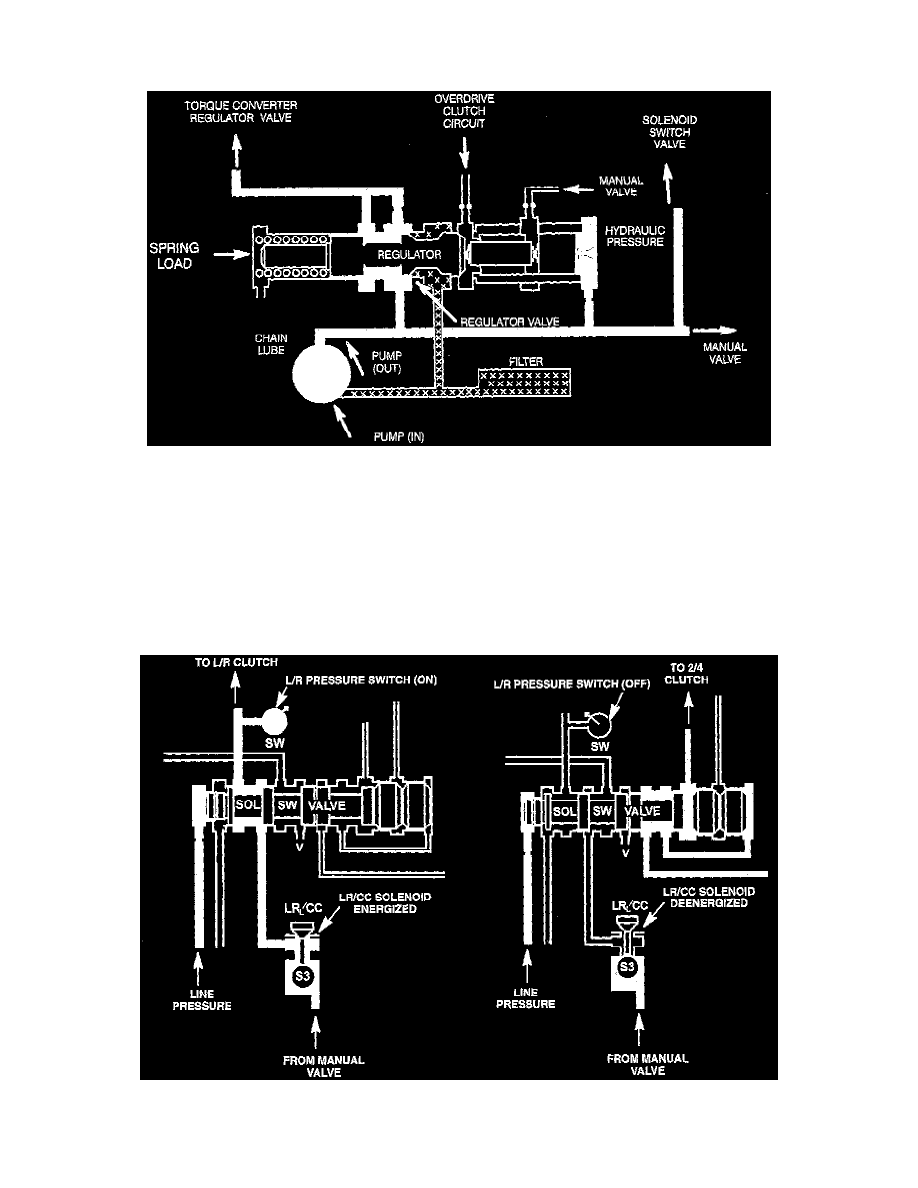Vision V6-3.5L VIN F (1997)

Regulator Valve
The regulator valve has one function: to regulate or control hydraulic pressure in the transaxle. The pump supplies unregulated pressure to the regulator
valve. The regulator valve controls, or limits, pump pressure. Regulated pressure is referred to as "line pressure." The regulator valve has a spring on one
end that pushes the valve to the right. This closes a dump (vent) to lower pressure. Closing the dump will cause oil pressure to increase. Oil pressure on
the opposite end of the valve pushes the valve to the left, opening the dump and lowering oil pressure. The result is spring tension working against oil
pressure to keep or maintain the oil at specific pressures. Regulated pressure varies depending on the gear range the transaxle is operating in.
A system of sleeves and ports allows the regulator valve to work at one of three different predetermined pressure levels. The oil that is dumped by the
regulator valve is directed back to the intake side of the oil pump.
Solenoid Switch Valve
The switch valve controls the direction of line pressure from the LR/CC solenoid. When the valve is shifted to the right, it allows the low/reverse clutch
to be pressurized. When it is shifted to the left, it directs line pressure to the TO and CC control valves to operate the TO clutch. The valve is shifted to
the right in all gears except 2nd, 3rd and 4th gear. When the transaxle upshifts to 2nd gear, the valve moves to the left, which allows converter clutch
